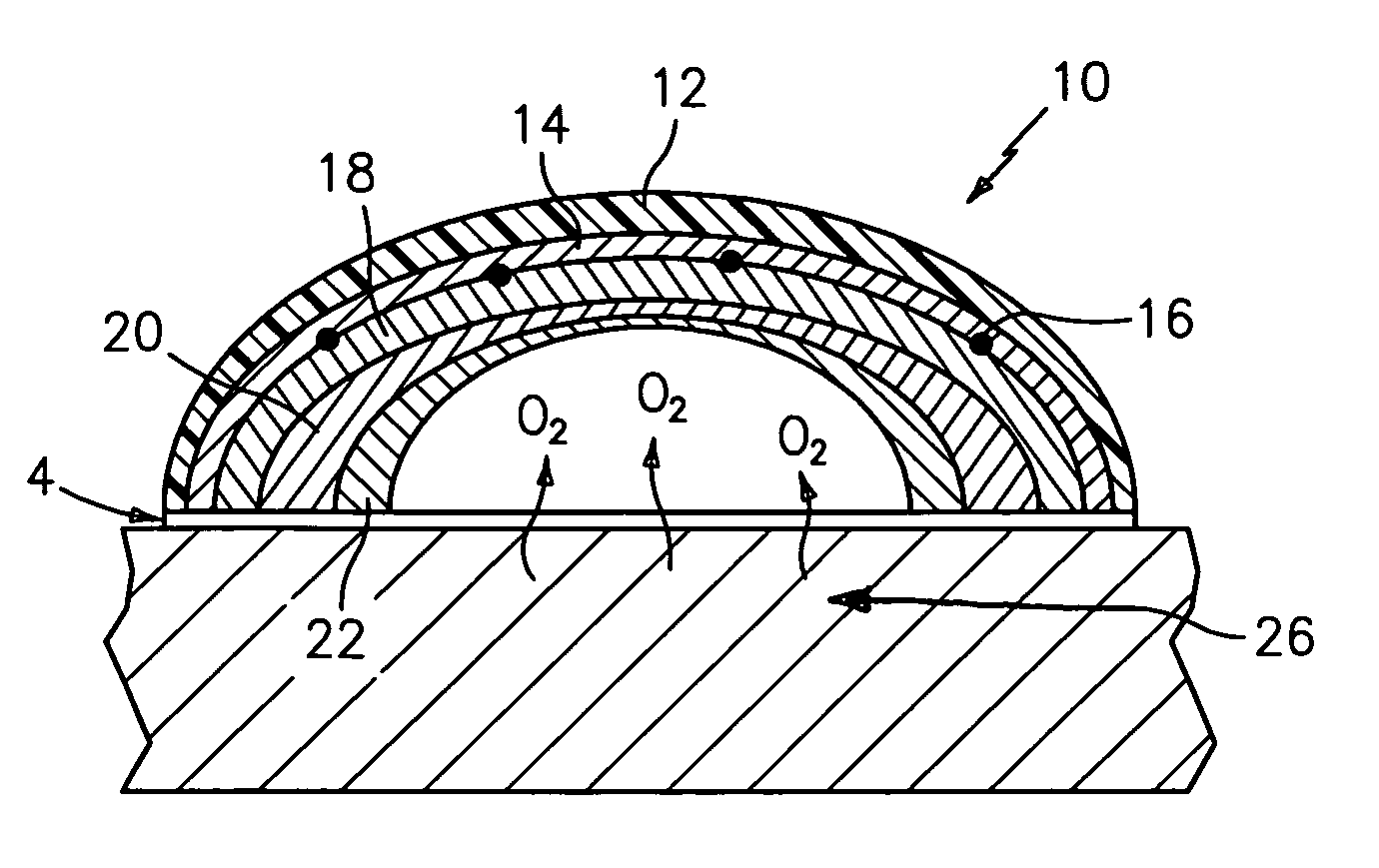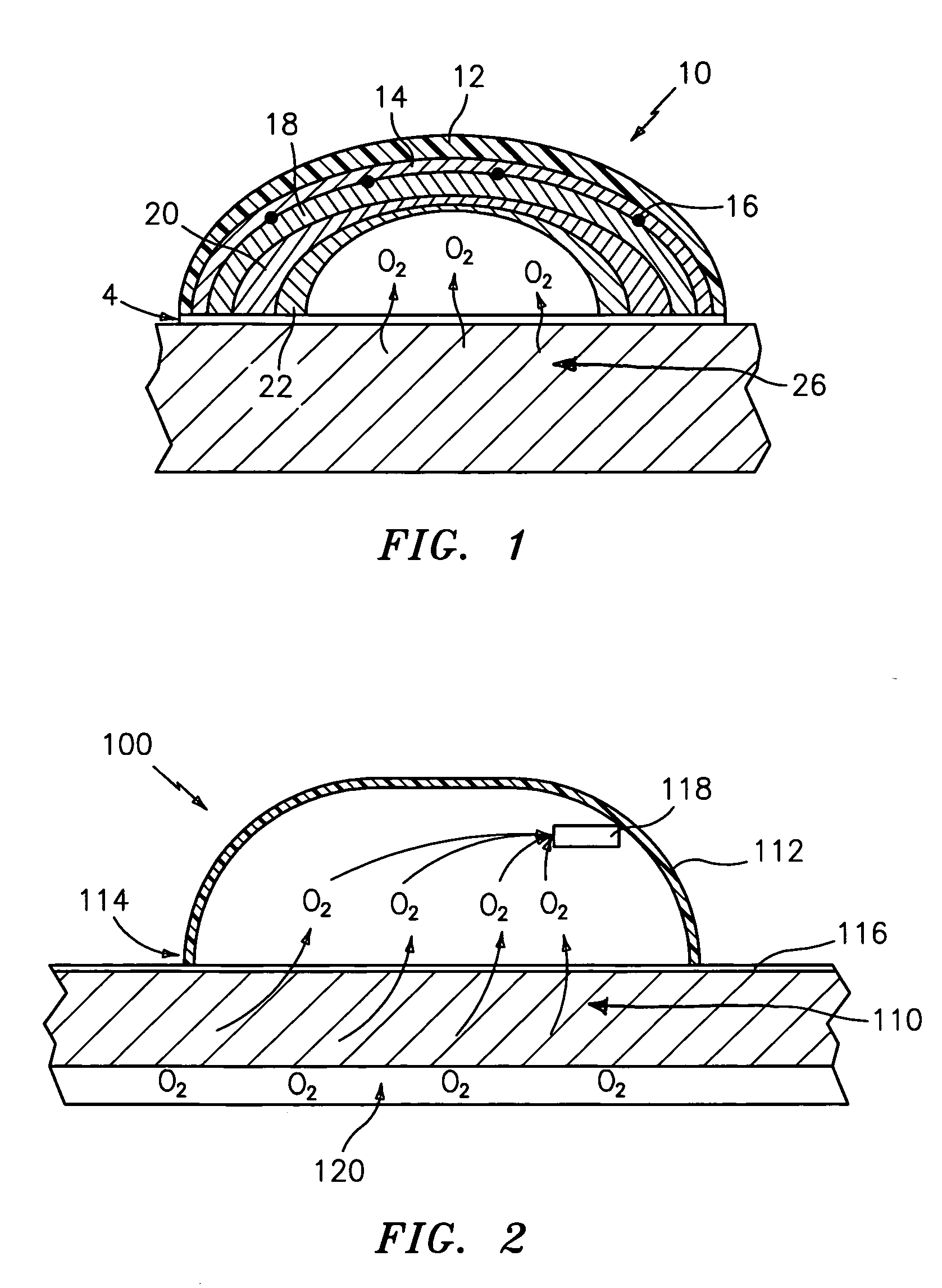Method and apparatus for tissue oxygenation
a tissue oxygenation and apparatus technology, applied in the medical field, can solve the problems of increasing the metabolic rate and the demand for oxygen to repair itself, reducing the amount of oxygen supplied, and affecting circulation damage, so as to increase the oxygenation of the tissue and reduce the concentration of oxygen
- Summary
- Abstract
- Description
- Claims
- Application Information
AI Technical Summary
Benefits of technology
Problems solved by technology
Method used
Image
Examples
Embodiment Construction
[0014] Supplying additional amounts of oxygen to skin tissue in need of an increase oxygen for therapeutic purposes, such as in the case of ulcers, wounds, or similar situations where the circulation (and source of oxygen) is compromised (such as in peripheral vascular disease), is essential to tissue healing. The present invention, nicknamed the “Tissue Oxygenator,” when used on a patient, causes a constant outward flow of oxygen supply from blood capillaries to the tissue and eventually out of the skin. The Tissue Oxygenator is applied on the outside of a target area where for therapeutic purposes, the concentration or flow of oxygen needs to be promoted and / or increased. The Tissue Oxygenator involves a closed, normobaric environment in which oxygen is burnt off, or absorbed by an oxygen-absorbing material, to reduce the concentration levels of O2 inside the Oxygenator. Through basic principles and laws of diffusion, the lower concentration levels of O2 created by the oxygen-abso...
PUM
 Login to View More
Login to View More Abstract
Description
Claims
Application Information
 Login to View More
Login to View More - R&D
- Intellectual Property
- Life Sciences
- Materials
- Tech Scout
- Unparalleled Data Quality
- Higher Quality Content
- 60% Fewer Hallucinations
Browse by: Latest US Patents, China's latest patents, Technical Efficacy Thesaurus, Application Domain, Technology Topic, Popular Technical Reports.
© 2025 PatSnap. All rights reserved.Legal|Privacy policy|Modern Slavery Act Transparency Statement|Sitemap|About US| Contact US: help@patsnap.com



